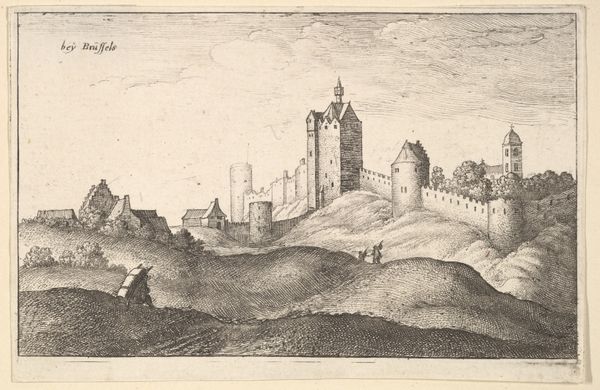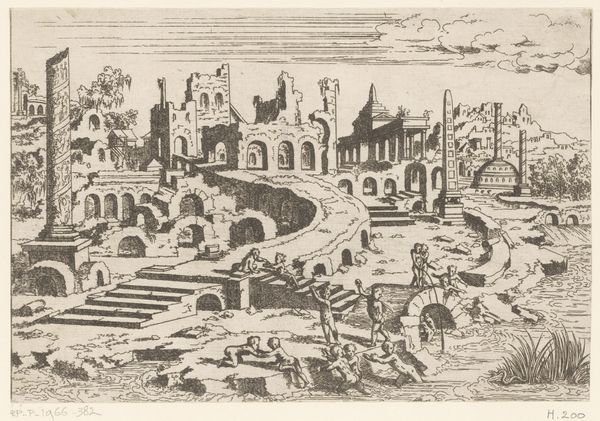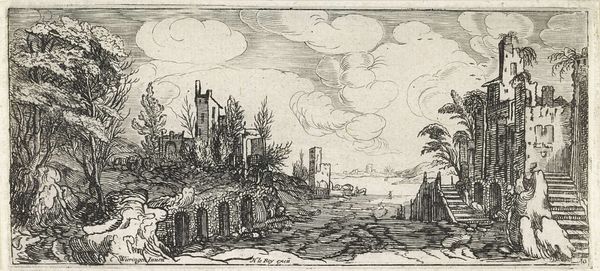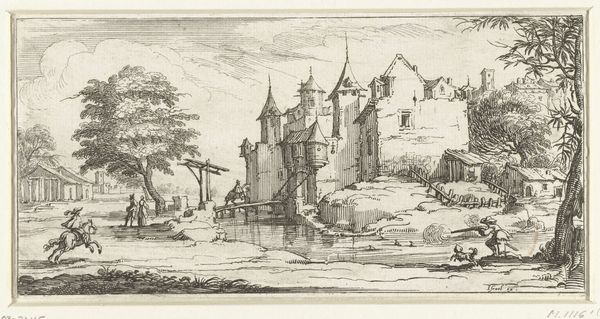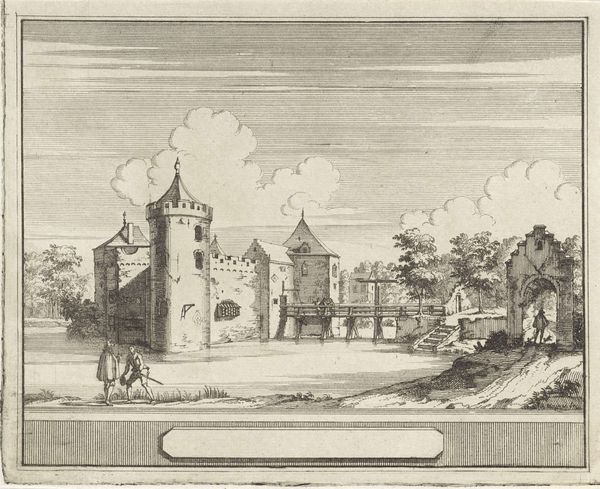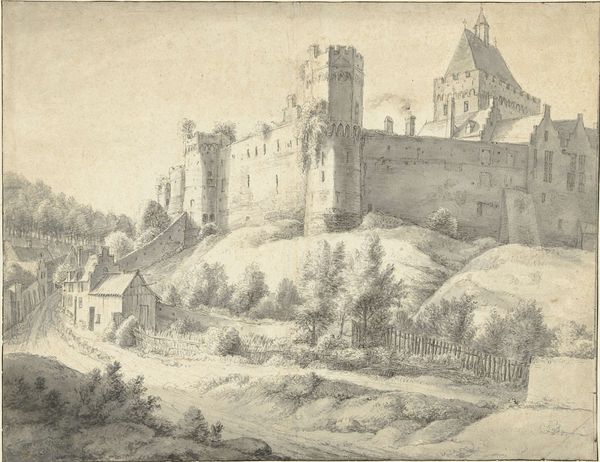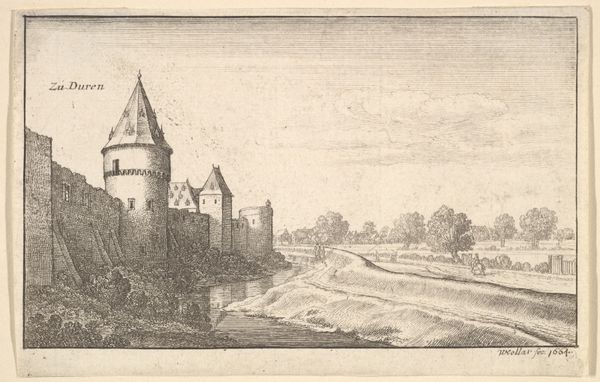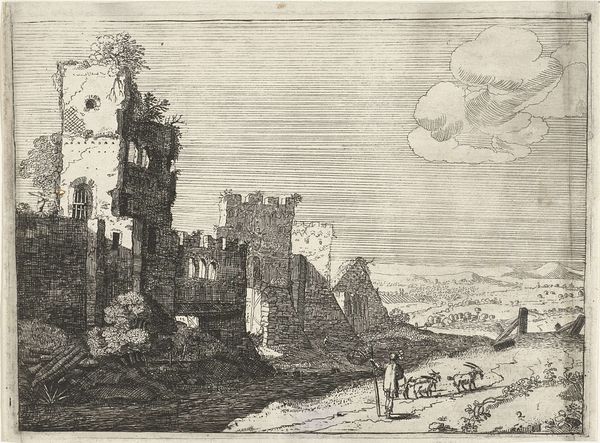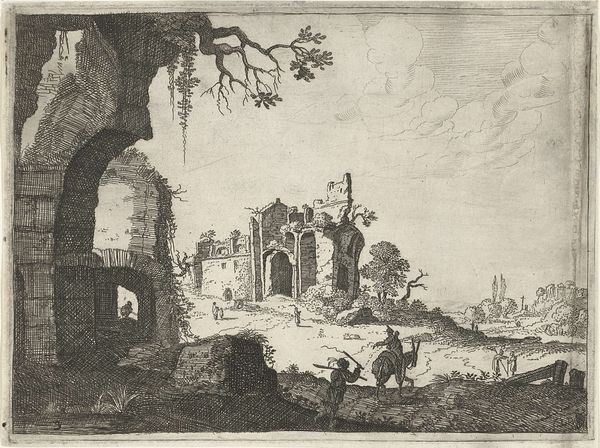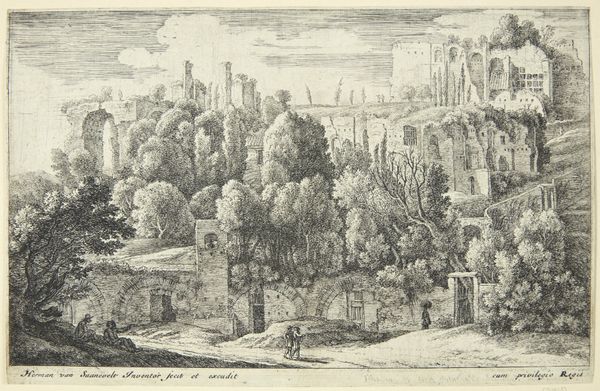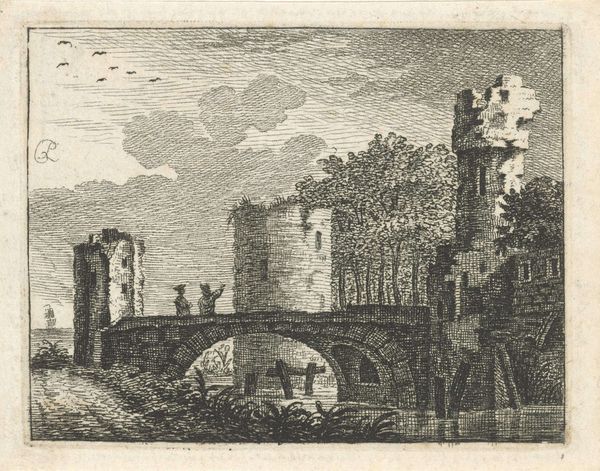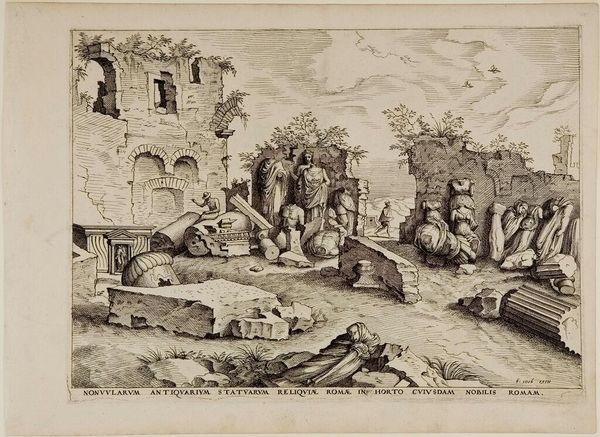
drawing, print, etching, paper, ink
#
drawing
#
baroque
# print
#
etching
#
landscape
#
paper
#
ink
Dimensions: height 141 mm, width 192 mm
Copyright: Rijks Museum: Open Domain
Editor: This is Claes Jansz. Visscher’s "Huis tussen ruïnes," made in 1613. It's an ink and etching print on paper. It feels pretty desolate. All these ruins... I’m wondering what kind of commentary Visscher is trying to make? Curator: Look closely at the ruins themselves. What are they made of? The stones, the mortar – these were commodities, produced and consumed. Visscher isn’t just depicting a landscape; he’s showing the remnants of economic activity, of labor, of a society that built and then… what? Why is it now in ruin? Editor: So you’re saying it’s less about the romantic idea of ruins and more about the materials, and where those materials come from? Curator: Exactly! Consider the printing process. Etching allows for mass production. These images were circulated, consumed by a public hungry for… what? For views of crumbling grandeur, perhaps? What does that consumption say about their values? Editor: That's fascinating. It connects the visible ruin with the whole invisible system of making and distributing images of it. I was seeing just an image of decay, but now I'm seeing all the economic activities that underpinned it, and its representation! Curator: What about the people included in this vista; How would you understand them in light of our materialism-based analysis? Editor: I see it! They become just another set of bodies inhabiting a space that has been defined by what we've consumed or otherwise constructed to exist. Now I need to start looking at everything this way! Curator: Precisely. Once we look at a painting and consider what types of industries were involved, how the work circulated, we can read art, not as an isolated depiction, but as connected to broader material conditions. It shows just how much of the historical economy and material context shaped the meaning of the artwork and our consumption practices.
Comments
No comments
Be the first to comment and join the conversation on the ultimate creative platform.
